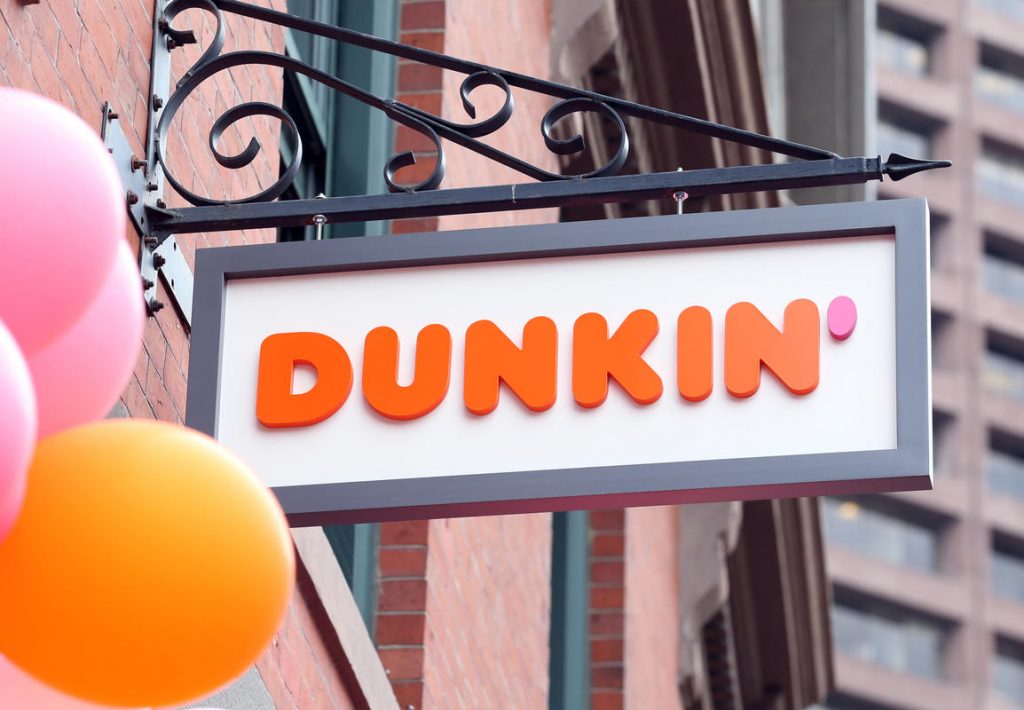
Dunkin’ Donuts recently announced its intention to drop “donuts” from its name. “Dunkin’” will continue to be featured in the familiar rounded font with an orange-and-pink color scheme. The name change was tested at a handful of Massachusetts restaurants late last year and apparently was successful. As such, commencing in January of 2019, the name change will officially take effect as part of a major rebrand of the company with the new name appearing on napkins, boxes, and signs at United States stores. The name change will eventually be adopted by the company’s international locations so that the company’s more than 12,500 stores globally will reflect this alteration.
Doughnuts will continue to be sold by “Dunkin’” but it will increase its emphasis on coffee and other drinks, such as nitro-infused cold brew. Indeed, the CEO stated that “there is no Dunkin’ without donuts!” This shift toward drinks has been occurring for a while now, as evidenced by the company’s cut of 10% of its menu earlier this year. Drinks currently comprise 60% of its sales. Moreover, the new name is consistent with the tagline used by Dunkin’ Donuts since 2006: “America Runs on Dunkin’.”
Over the last 68 years, Dunkin’ Donuts has become a very well-known brand. In fact, the company’s spelling of the word “doughnut” as “donut” arguably popularized the spelling as part of the American lexicon. The Merriam Webster dictionary even added the term “donut” as a less common spelling of “doughnut.” As a result of this popularization, the word has likely suffered genericide. A trademark becomes genericized when the term or phrase no longer becomes associated exclusively with the brand. Instead, the term becomes associated with the product or service itself.
Generic terms cannot operate as trademarks, whether commonly understood as the name of a product or service or otherwise becoming known in such manner due to prolific use thereof. Trademarks are aimed at distinguishing the goods or services of one enterprise from those of other enterprises. Thus, consumers are unable to distinguish between different parties’ goods and services when generic terms are used. Such terms therefore cannot properly indicate source. As an example, the term “escalator,” while originally a registered mark of the Otis Elevator Company, is now known as the name of a moving staircase. As another example, the word “zipper” was originally owned by B.F. Goodrich for use in rubber boots but has since taken on a generic meaning. Here, the term “donuts” has become so accepted and used in our lexicon that the term is now generic.
In contrast to generic terms, descriptive trademarks are words that identify the characteristics of a product or service to which the mark pertains and can serve as source identifiers. Descriptive terms may acquire distinctiveness because, over time, the consuming public may come to understand the terms as associated with specific goods or services. Acquired distinctiveness, or secondary meaning, indicates that although the mark on its face describes the relevant goods or service, consumers have come to recognize the mark as having a source indicating function. Secondary meaning is often achieved through long term use or large amounts of marketing and advertising.
While not overtly admitted, it seems Dunkin’ Donuts has sensed the genericide of the word “donuts” for some time now. This is evidenced by the fact that trademark applications and registrations filed by the company have often required the disclaimer of the term “donuts” for certain classes of goods and services. A disclaimer in a trademark application or registration is a statement made of record to indicate that the owner does not claim any exclusive rights to the disclaimed portion of the mark. Disclaimed words are usually those considered to be generic, descriptive, or informational. For example, Sprinkles Cupcakes owns registration of the identical phrase for a variety of goods and services and all with the term “CUPCAKES” disclaimed. Interestingly, the original registration for “DUNKIN’ DONUTS” circa 1963 did not require disclaimer of the term “donuts.” However, later iterations of “DUNKIN’ DONUTS,” including design marks, have necessitated such disclaimer for certain classes.
Due to the likely genericide of the term “donuts,” Dunkin’ Donuts’ decision to drop the term serves not only to modernize its brand but also to strengthen it. What remains unclear is whether the consuming public will accept this change and start referring to the multinational quick service restaurant chain as “Dunkin’” or if this official change will literally be “in name only.”
